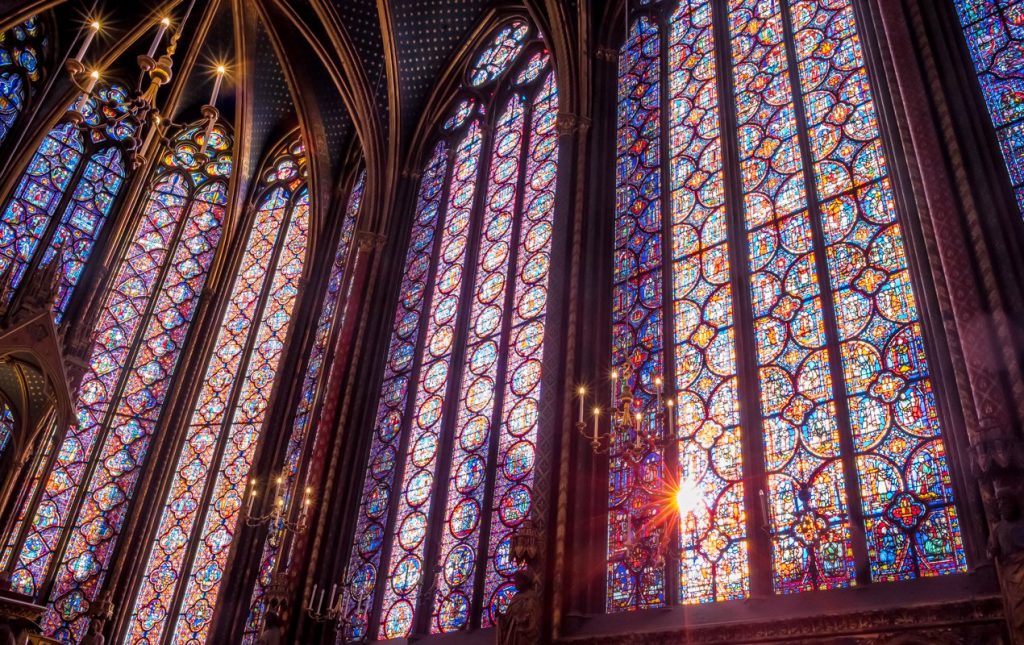Introduction
The 14th and 15th centuries represent one of the most extraordinary periods in the history of Stained glass. This era, straddling the height of the Gothic age and the dawn of the Renaissance, witnessed incredible advancements in technique, artistry, and storytelling. Stained glass not only adorned Europe’s greatest cathedrals but also served as a vital medium for communicating religious, cultural, and social messages through light and color.
Historical Context
By the 14th century, stained glass had already become a defining element of Gothic architecture. The tall, pointed arches and ribbed vaults of the period allowed for expansive window spaces, which artisans filled with increasingly complex and colorful designs. By the 15th century, the influence of Renaissance ideals began to shape the art form, introducing more naturalistic figures and refined compositions.
Influence of Religion and Society
Religion was central to the themes depicted in stained glass during this period. Windows told stories from the Bible, celebrated the lives of saints, and often incorporated heraldic symbols of noble families who sponsored the works. These windows reflected not only spiritual devotion but also social hierarchy and civic pride.
Artistic Techniques of the Period
The artistry of stained glass in the 14th and 15th centuries reached remarkable levels of sophistication.
Glass Production and Coloring
Artisans used metallic oxides to achieve vibrant colors—cobalt for deep blues, copper for greens, and gold for rich reds. Each sheet of glass was hand-blown, resulting in subtle variations in thickness and texture that enhanced the play of light.
Painting and Firing
Detailed features such as facial expressions, folds of clothing, and architectural backgrounds were painted onto the glass with vitreous paint. Once fired in a kiln, these details fused permanently, allowing for intricate designs that could withstand centuries.
Lead Came and Structural Design
The lead cames not only joined the glass pieces but also became an integral part of the artwork, outlining figures and guiding the viewer’s eye across the composition.
Iconic Examples from the 14th and 15th Centuries
Throughout Europe, numerous examples of stained glass from this era have survived, each showcasing the skill and creativity of its makers.
France
Chartres Cathedral continued to produce masterpieces, while the Sainte-Chapelle in Paris offered a dazzling display of narrative windows filled with luminous blues and reds.
England
York Minster and Canterbury Cathedral featured monumental windows such as the Great East Window, which remains one of the largest expanses of medieval stained glass in the world.
Germany
Cologne Cathedral and Augsburg Cathedral preserved remarkable panels depicting biblical scenes and saintly portraits, combining Gothic grandeur with early Renaissance influences.
Transition to the Renaissance Style
By the late 15th century, Renaissance humanism began influencing stained glass design. Figures became more proportionate, facial expressions more realistic, and backgrounds more naturalistic. Artists embraced perspective and depth, creating a sense of space within the window.
Blending Gothic and Renaissance Elements
Many works from this transitional period combine Gothic architecture’s intricate tracery with Renaissance art’s human-centered focus, producing windows of exceptional beauty and innovation.
Preservation of 14th and 15th Century Stained Glass
The survival of stained glass from this era is due to both careful preservation and fortunate circumstances. Many windows have been restored over the centuries, with some original glass still intact.
Conservation Challenges
Exposure to the elements, war damage, and structural shifts in buildings all pose threats to these windows. Preservation efforts often involve protective glazing, careful cleaning, and selective replacement of damaged sections.
The Lasting Legacy
The 14th and 15th centuries set the standard for stained glass craftsmanship. The innovations of this era influenced generations of artists and remain a benchmark for quality and artistry.
Conclusion
The stained glass of the 14th and 15th centuries stands as a testament to human creativity, devotion, and technical mastery. Blending Gothic splendor with the emerging realism of the Renaissance, these works transformed light into a living, spiritual experience. Whether viewed in a cathedral’s soaring nave or studied in a museum, they continue to inspire awe, offering a vivid connection to the artistry of a remarkable age.
